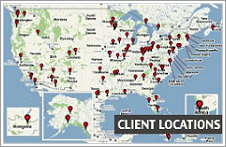Most of what happens in organizations can be understood in terms of two opposing concepts: power over and power with.
Chances are you’ve experienced one or both of these first hand, without using the terminology.
Perhaps you had a boss who told you what to do, who rarely asked for your input, who used subtle threats and fake praise to control your behavior. If so, you were at the receiving end of the “power over” model.
Or maybe you had a “power with” manager who led with a meaningful mission, who favored teamwork and co-creation over command and control, who recognized and leveraged your strengths. Maybe your current manager fits this description. Maybe you are that manager.
The huge distinction between “power over” and “power with” shapes every aspect of work life.
For anyone who’s striving to improve their workplace, the power over/with model is essential for understanding what’s going on – and for uncovering current strengths and improvement opportunities.
That’s why the following chart is so important. Use it to deepen your own understanding. Share it with others to prompt dialogue and group discovery. And use the resulting insights to identify practical steps that you and others can take to strengthen your workplace.
| POWER OVER | POWER WITH | |
| PERSPECTIVE
In these very different work environments, people see things in very different ways
|
The world is viewed as generally hostile
Scarcity: “I need to get and protect my share” Mechanistic: the organization as machine Zero-sum game Leader as lion Divide and conquer Manageable pieces |
The world is viewed as generally friendly
Abundance: “There’s enough for everyone” Humanistic: the organization as social system Synergy: 1+1>2 Servant leader Strive to unite Chaotic whole |
| PRIORITIES
Here’s what largely determines how people go about their work in “power over” and “power with” workplaces |
Rules
Procedures: How to do it Compliance Competition Extrinsic rewards, threats, and punishment |
Principles
Mission: Why we do it Commitment Co-Creation Intrinsic motivation |
| ACTIONS
This is what you’re likely to see and hear |
Bemoaning what’s going wrong
Fixing blame Dwelling on weaknesses Hoarding and selectively handing out key information and resources |
Telling stories of what’s going right
Fixing processes Leveraging strengths Freely sharing whatever is necessary for the greater good |
| RELATIONSHIPS
Relationships are based on very different factors |
Fear
Being fearful that others will lessen our power Skepticism: “You will likely mess this up” Apathy |
Trust
Trusting others…and working to earn trust Confidence: “You will succeed at this” Empathy |
| DECISION-MAKING
One of the biggest differences is in how people make decisions in these work environments |
Exclusion: A small number of people are seen as qualified to make decisions
Group decision-making produces chaos My way or the highway Efficiency Win-Lose |
Inclusion: The best outcomes unfold when many people are involved in decision-making
Group decision-making fosters commitment Multiple paths Effectiveness Win-Win |
| LEARNING
Even in terms of how people are regarded for their knowledge and capacity, sharp differences are seen |
People are empty vessels who need to be told what to do
A few teach, some learn |
People bring abundant know-how and learn best by experience
Everyone teaches, everyone learns |
| OTHER DISTINCTIONS | Silos
Statements Direction Inform Supervise |
Systems
Questions Dialogue Inspire Engage |
| POWER OVER | POWER WITH |




